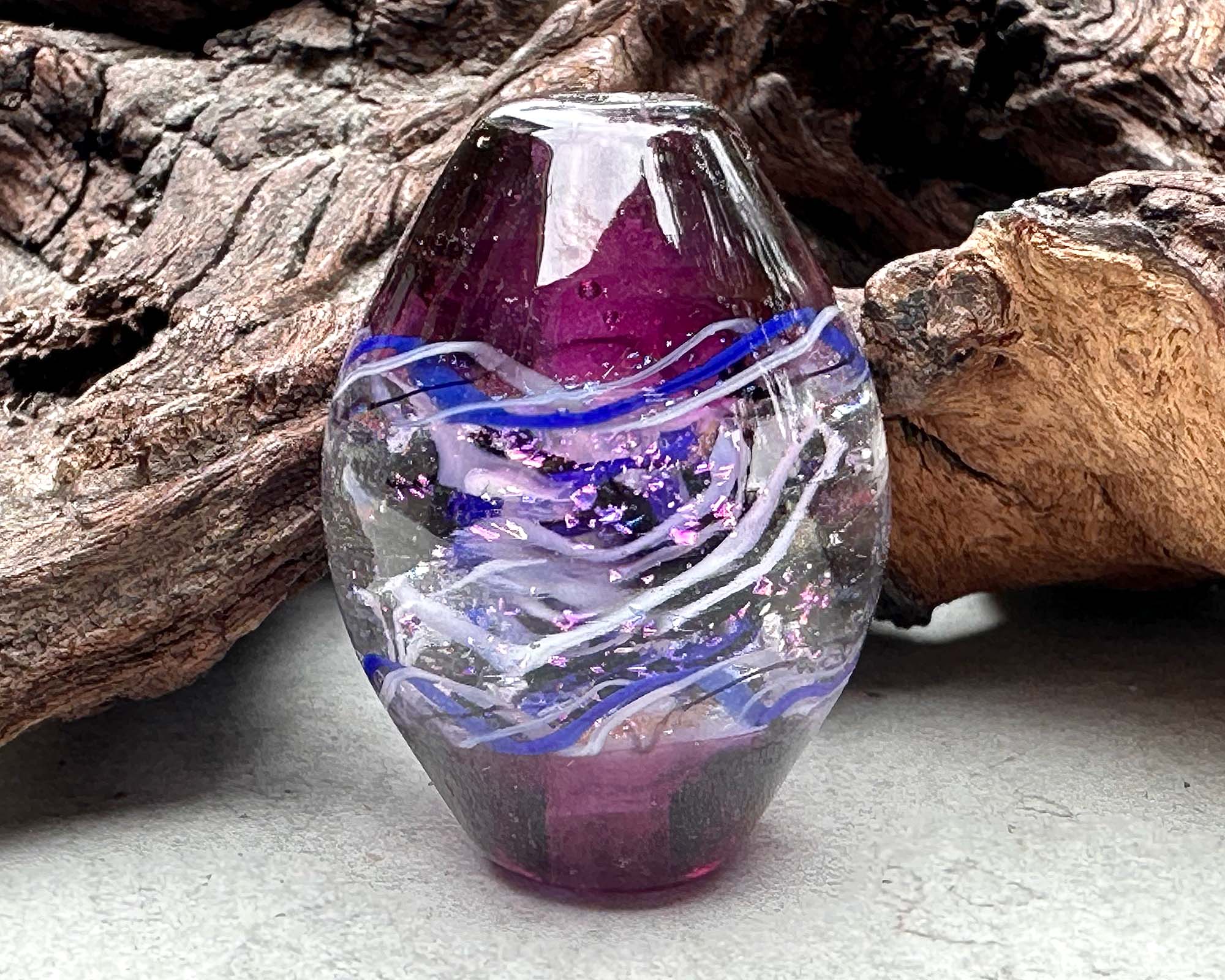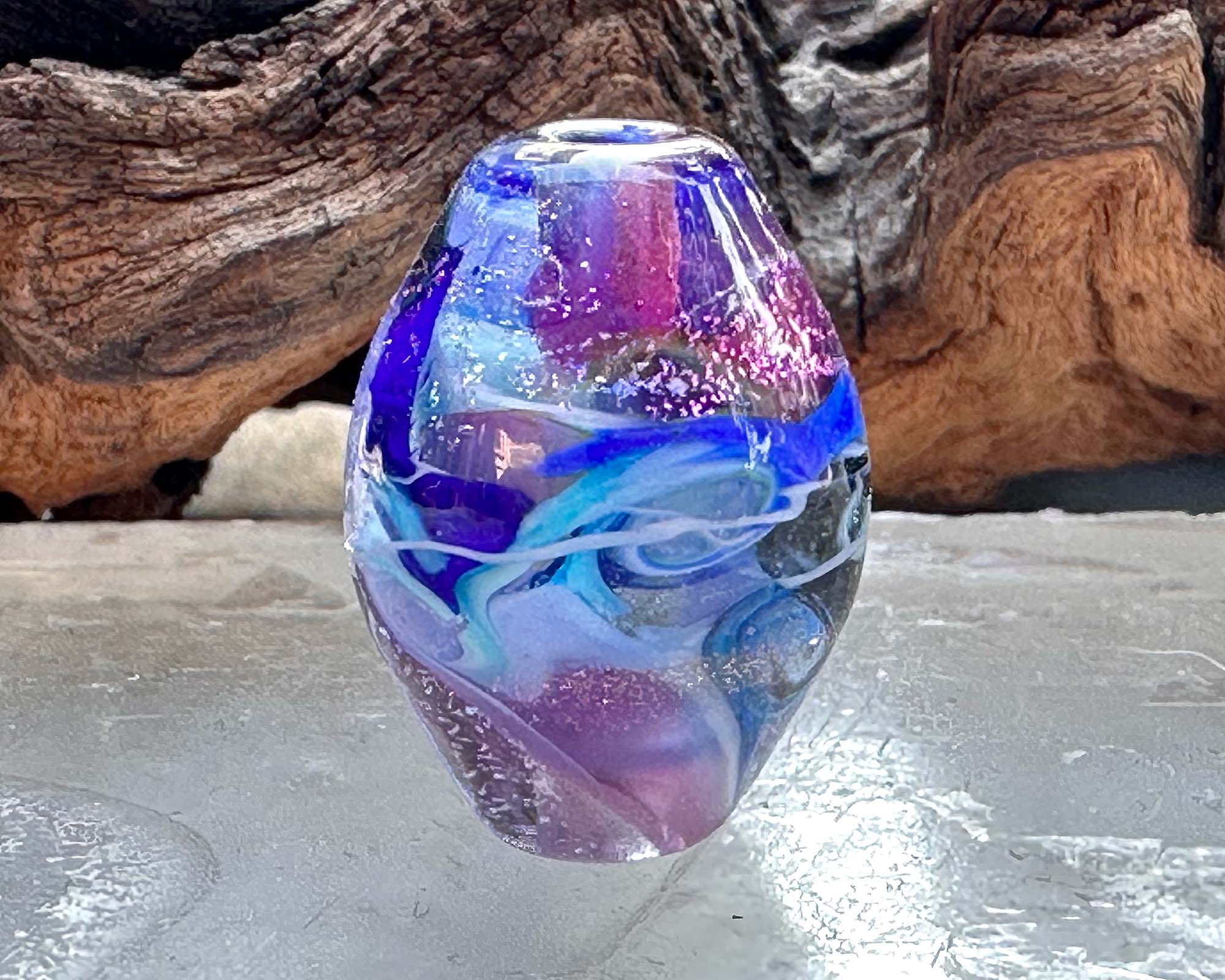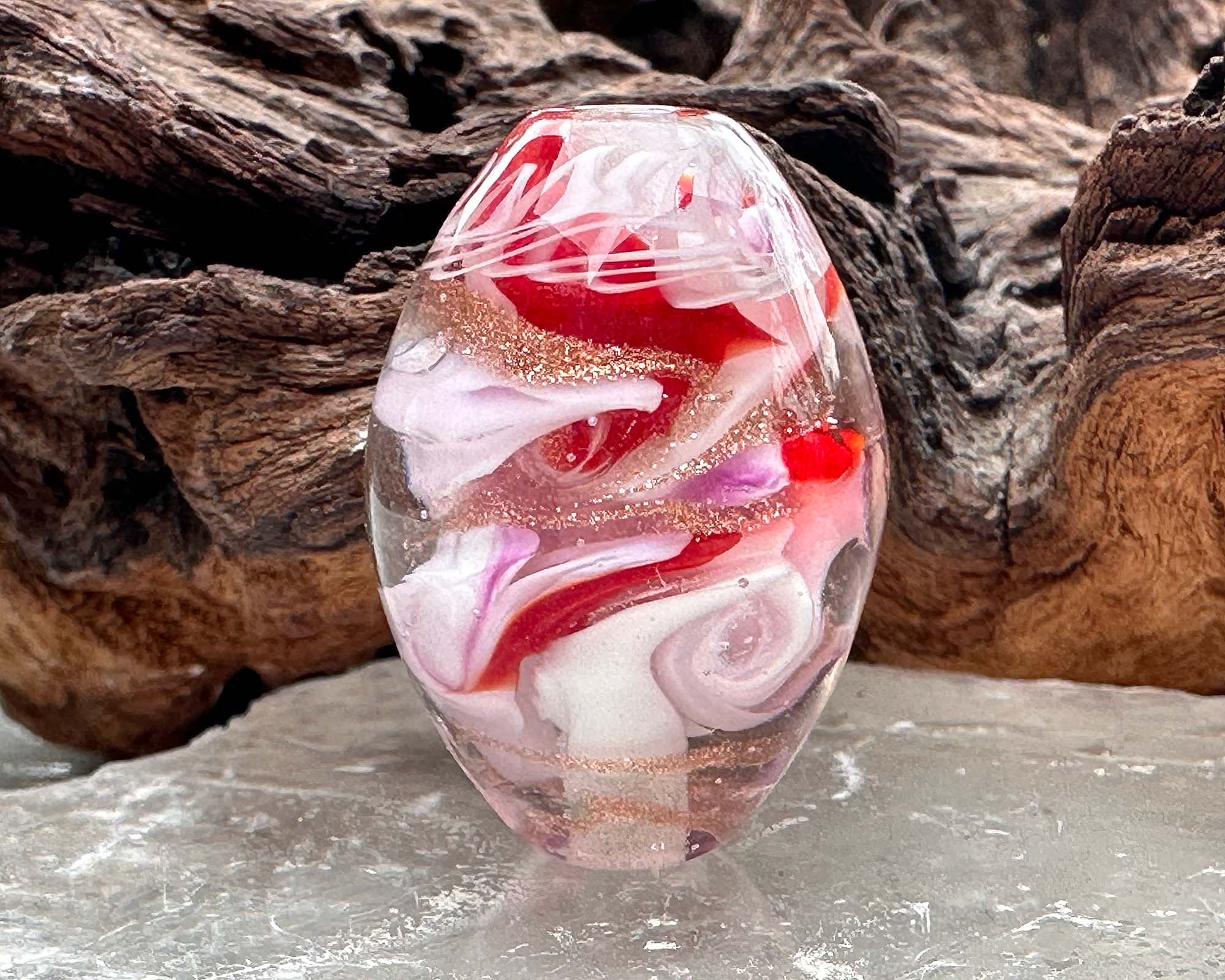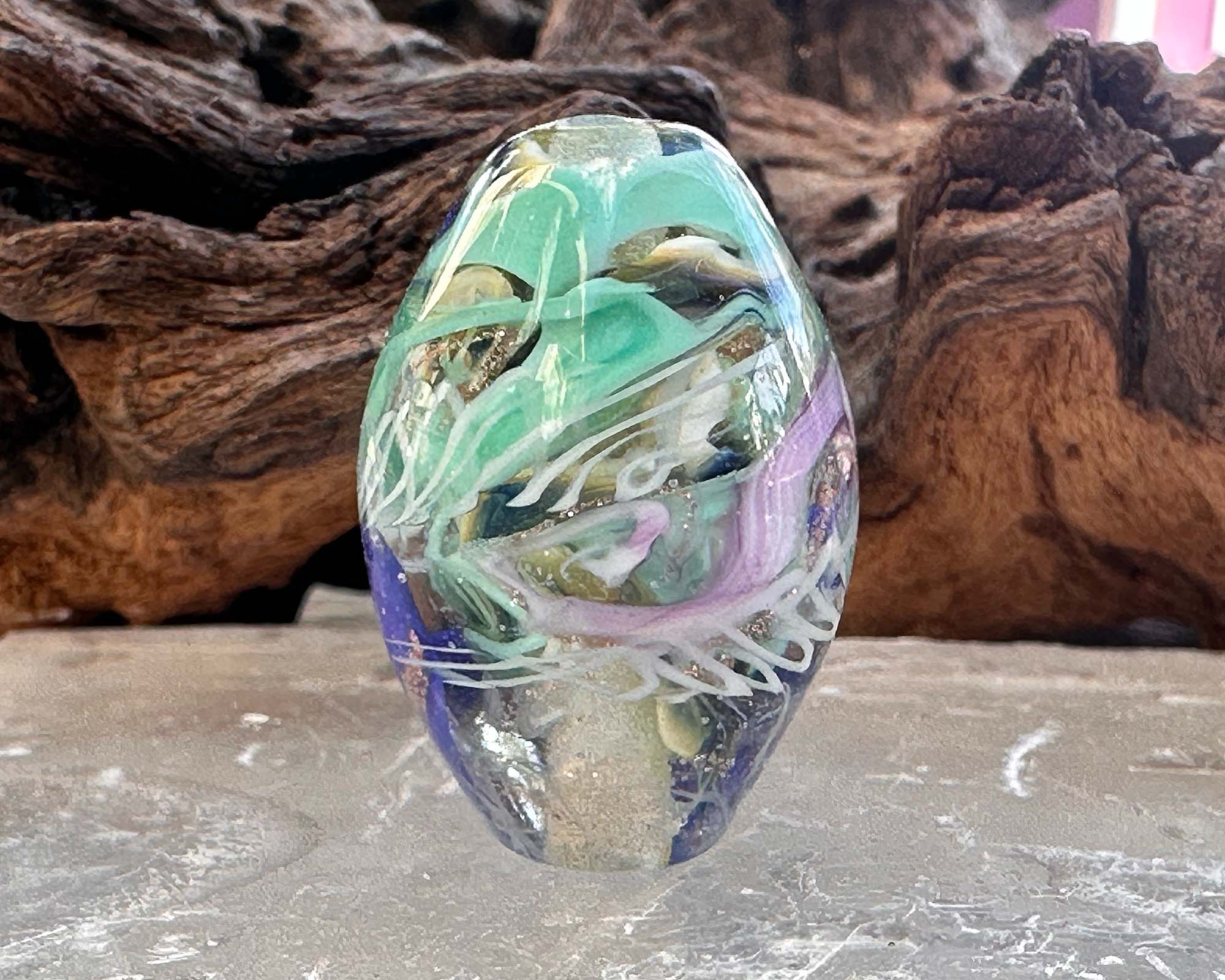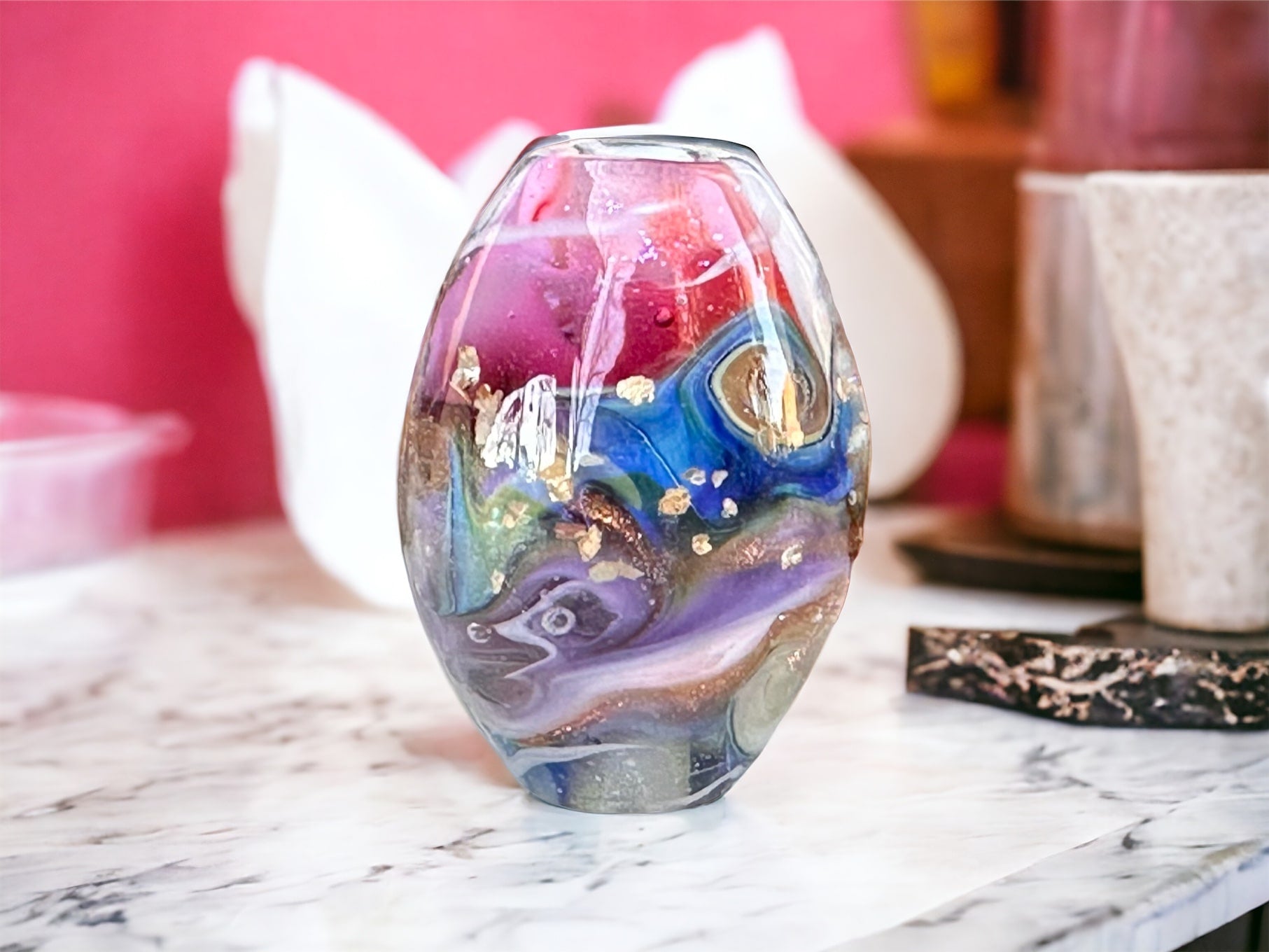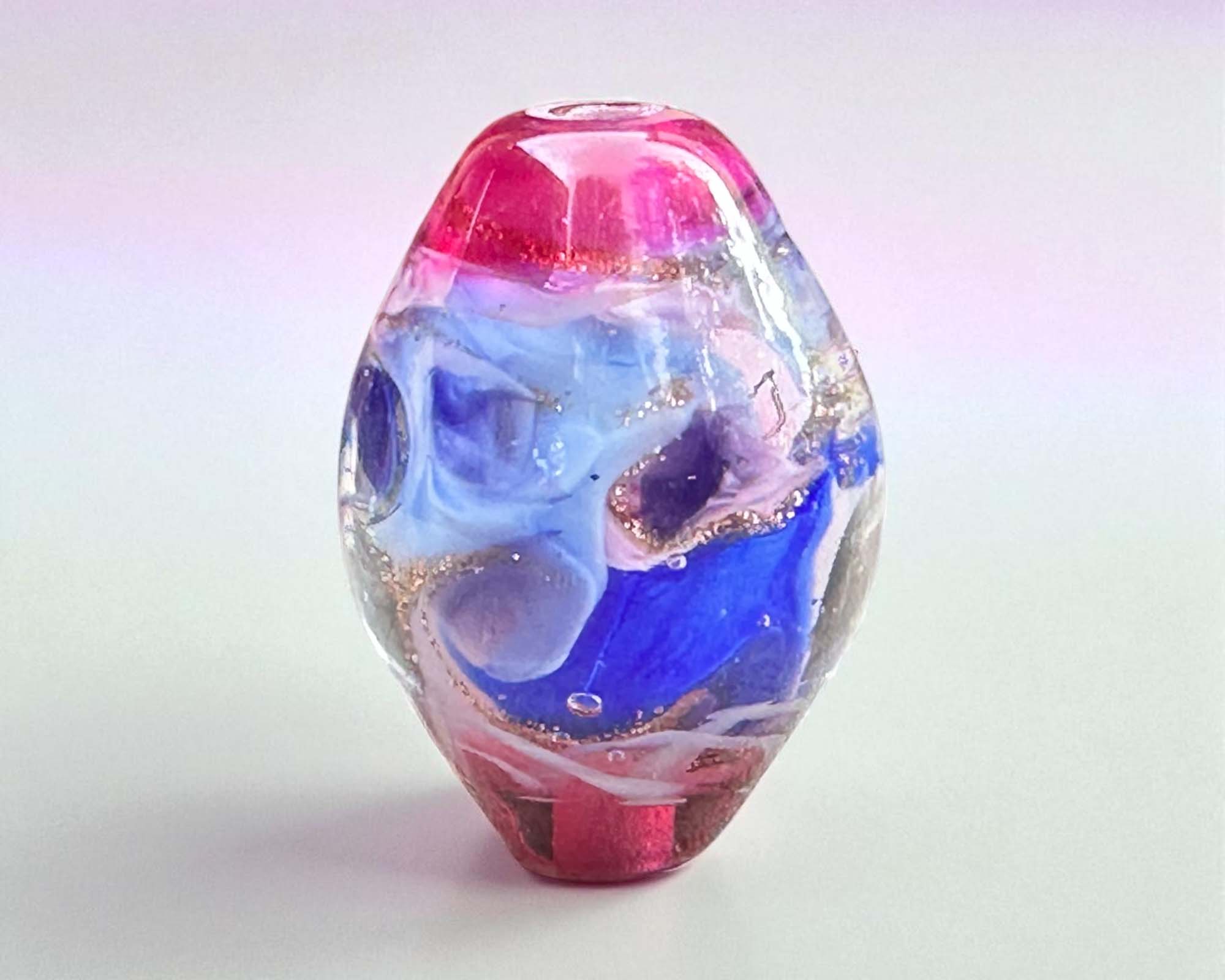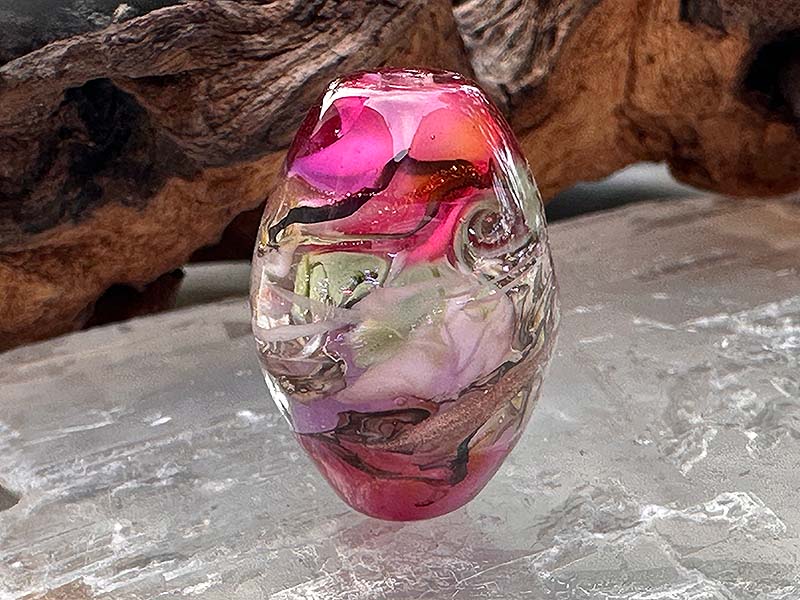
How to Make a Scrap Lampwork Bead
Learn how to create stunning lampwork focal beads using scrap glass in this step-by-step tutorial. Discover techniques to transform leftover stringers and glass pieces into unique works of art. Enhance your lampworking skills and unleash your creativity with this comprehensive scrap glass bead-making tutorial.
Over the years, you always end up with pieces of glass. It could be leftover stringers or from pieces that pop off a shocky rod. Over the years, I used to end up with some short leftover pieces. Now, I will usually fuse the short rod to the new rod of glass, unless the rod is too shocky. Then I end up with little pieces like the ones below that can turn into unique works of art. You can choose a solid color for the ends of the bead, and sometimes I use gold aventurine stringers or simple white twists to add extra elements to this bead.
Supplies
♦ Mandrels
♦ Bead release
♦ CG Olive roller (optional)
♦ Graphite marver
♦ Scrap glass pieces
♦ Transparent color of choice
♦ Gold aventurine stringer (optional)
♦ Dichroic glass (optional)
♦ Kiln
Step 1
To get started with this project, you just need some scrap glass pieces or leftover stringers. The only rule of thumb is to make sure the pieces look good together. It is also a good idea to avoid using too many reactive pieces.
Over time, I have been collecting these pieces in little jars, separating non-reactive colors in one jar and reactive colors in another. You can grab a reactive color or two to mix in your project. There are two little short pieces of silvered ivory stringer and an intense black stringer that I used in this bead.

Step 2

Step 3

Step 4

Step 5

Step 6

Step 7

Step 8

Step 9





Scrap Lampwork Beads
Here are some other examples of scrap lampwork beads.






